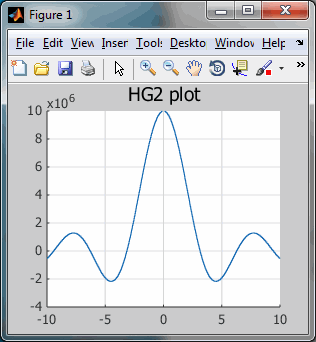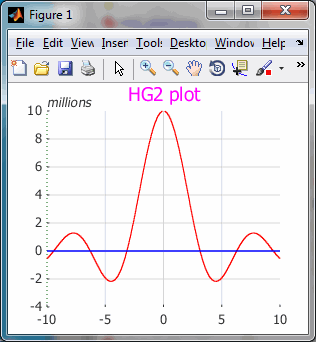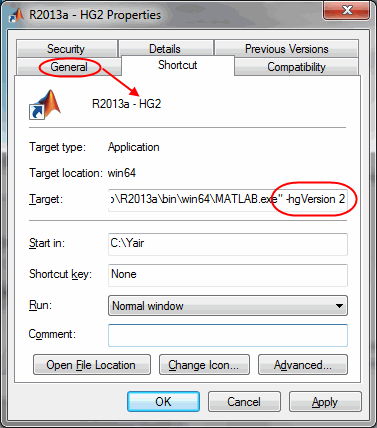Did you ever wish to modify Matlab’s default toolbar/menubar items?
I recently consulted to a client who needed to modify the default behavior of the legend action in the toolbar, and the corresponding item on the main menu (Insert / Legend). The official version is that only user-added items can be customized, whereas standard Matlab items cannot.
Luckily, this can indeed be done using simple pure-Matlab code. The trick is to get the handles of the toolbar/menubar objects and then to modify their callback properties.

Default legend insertion action
Using the toolbar/menubar item handles
Getting the handles can be done in several different ways. In my experience, using the object’s tag string is often easiest, fastest and more maintainable. Note that the Matlab toolbar and main menu handles are normally hidden (HandleVisibility = ‘off’). Therefore, in order to access them we need to use the findall function rather than the better-known findobj function. Also note that to set the callbacks we need to access differently-named properties: ClickedCallback for toolbar buttons, and Callback for menu items:
hToolLegend = findall(gcf,'tag','Annotation.InsertLegend'); set(hToolLegend, 'ClickedCallback',{@cbLegend,hFig,myData}); hMenuLegend = findall(gcf,'tag','figMenuInsertLegend'); set(hMenuLegend, 'Callback',{@cbLegend,hFig,myData});
As a side note, two undocumented/unsupported functions, uitool(hFig,tagName) and uigettoolbar, also retrieve toolbar items. Since using findall is so simple and more supported, I suggest using the findall approach.
To see the list of available toolbar/menubar tags, use the following code snippet:
% Toolbar tag names: >> hToolbar = findall(gcf,'tag','FigureToolBar'); >> get(findall(hToolbar),'tag') ans = 'FigureToolBar' 'Plottools.PlottoolsOn' 'Plottools.PlottoolsOff' 'Annotation.InsertLegend' 'Annotation.InsertColorbar' 'DataManager.Linking' 'Exploration.Brushing' 'Exploration.DataCursor' 'Exploration.Rotate' 'Exploration.Pan' 'Exploration.ZoomOut' 'Exploration.ZoomIn' 'Standard.EditPlot' 'Standard.PrintFigure' 'Standard.SaveFigure' 'Standard.FileOpen' 'Standard.NewFigure' '' % Menu-bar tag names: >> get(findall(gcf,'type','uimenu'),'tag') ans = 'figMenuHelp' 'figMenuWindow' 'figMenuDesktop' 'figMenuTools' 'figMenuInsert' 'figMenuView' 'figMenuEdit' 'figMenuFile' 'figMenuHelpAbout' 'figMenuHelpPatens' 'figMenuHelpTerms' 'figMenuHelpActivation' 'figMenuDemos' 'figMenuTutorials' 'figMenuHelpUpdates' 'figMenuGetTrials' 'figMenuWeb' 'figMenuHelpPrintingExport' 'figMenuHelpAnnotatingGraphs' 'figMenuHelpPlottingTools' 'figMenuHelpGraphics' '' '' < = Note the missing tag names... '' 'figMenuToolsBFDS' <= note the duplicate tag names... 'figMenuToolsBFDS' 'figDataManagerBrushTools' 'figMenuToolsAlign' 'figMenuToolsAlign' ... (plus many many more...)
Unfortunately, as seen above, Matlab developers forgot to assign tags to some default toolbar/menubar items. Luckily, in my particular case, both legend handles (toolbar, menu) have valid tag names that can be used: ‘Annotation.InsertLegend’ and ‘figMenuInsertLegend’.
If an item’s tag is missing, you can always find its handle using its Parent, Label, Tooltip or Callback properties. For example:
hPrintMenuItem = get(findall(gcf,'Label','&Print...'));
Note that property values, such as the tag names or labels, are unsupported and undocumented. They may change without warning or notice between Matlab releases, and have indeed done so in the past. Therefore, if your code needs to be compatible with older Matlab releases, ensure that you cover all the possible property values, or use a different way to access the handles. While using the tag name or label as shown above is considered "Low risk" (I don't expect it to break in the near future), their actual values should be considered somewhat more risky and we should therefore code defensively.
Another simple example: Print Preview
As another simple and very useful example, let's modify the default Print action (and tooltip) on the figure toolbar to display the Print-Preview window rather than send the figure directly to the printer:

Matlab's default toolbar Print action
hToolbar = findall(gcf,'tag','FigureToolBar'); hPrintButton = findall(hToolbar,'tag','Standard.PrintFigure'); set(hPrintButton, 'ClickedCallback','printpreview(gcbf)', ... 'TooltipString','Print Preview');
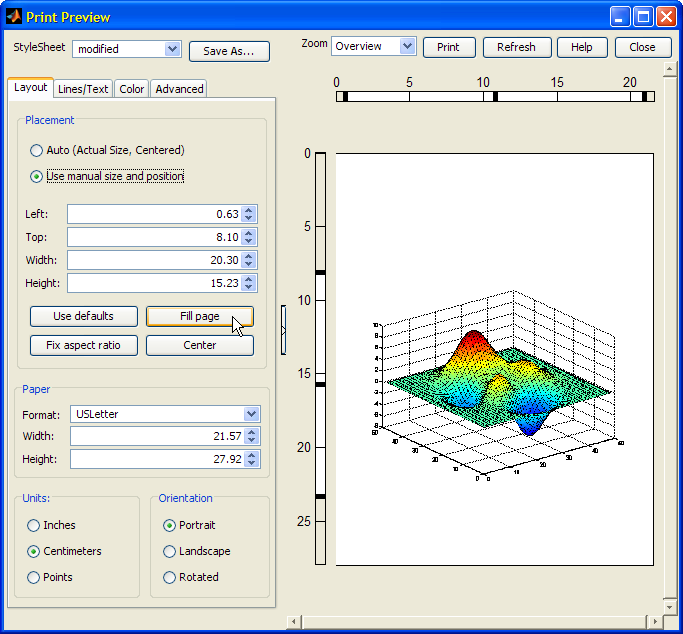
Matlab's Print Preview window
More advanced customization of the toolbar and menu items are possible, but require a bit of Java code. Examples of toolbar customizations were presented in past articles (here and here). A future article will explain how to customize menu items.
Have you found a nifty way to customize the menubar or toolbar? If so, please share it in the comments section below.
Related posts:
- Customizing the standard figure toolbar, menubar The standard figure toolbar and menubar can easily be modified to include a list of recently-used files....
- Getting default HG property values Matlab has documented how to modify default property values, but not how to get the full list of current defaults. This article explains how to do this. ...
- Customizing figure toolbar background Setting the figure toolbar's background color can easily be done using just a tiny bit of Java magic powder. This article explains how. ...
- uicontrol side-effect: removing figure toolbar Matlab's built-in uicontrol function has a side-effect of removing the figure toolbar. This was undocumented until lately. This article describes the side-effect behavior and how to fix it....

















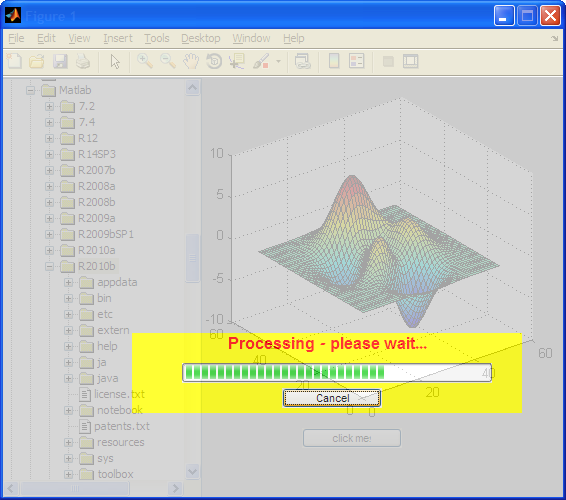

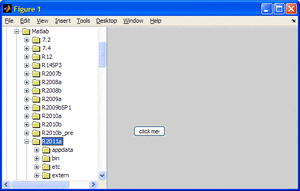
 +
+  =
= 
















